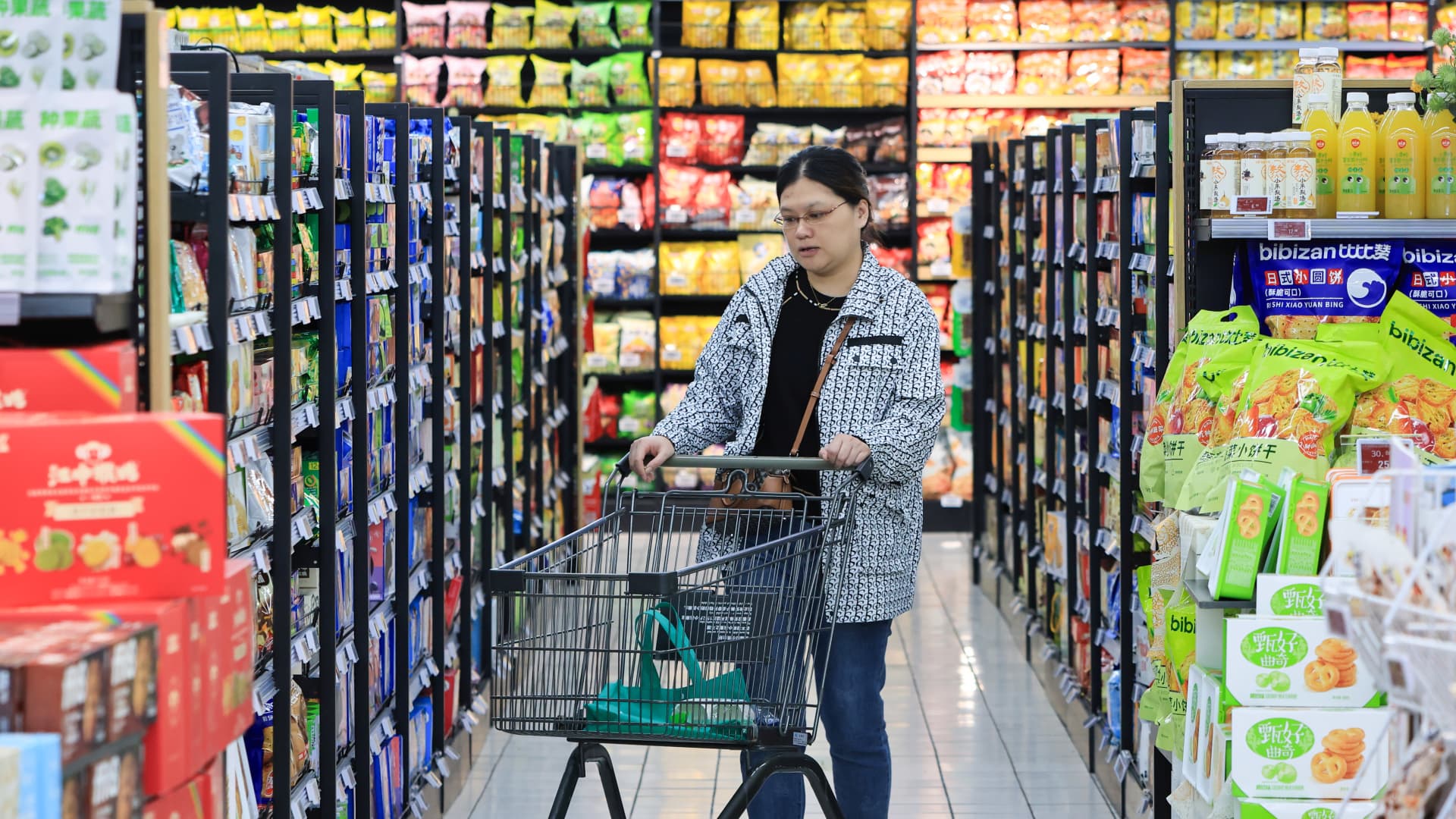Customers shopping for vegetables at a supermarket in Nanjing, China.
Nurphoto | Nurphoto | Getty Images
China’s consumer price growth fell to a five-month low in November and missed expectations, climbing 0.2% from a year ago, according to data from the National Bureau of Statistics released Monday.
Analysts polled by Reuters had expected a slight pickup in retail inflation to 0.5% in November from a year ago, versus 0.3% in October.
Core inflation, which excludes volatile food and fuel prices, rose 0.3% in November from 0.2% in October.
On a year on year basis, prices of pork and fresh vegetables rose 13.7% and 10.0% respectively.
China’s producer price index or wholesale inflation declined for the 26th month. Producer inflation fell by 2.5% year on year in November, less than the estimated 2.8% decline as per the Reuters poll.
Among the purchaser price index of industrial producers, the prices of ferrous metal materials led declines by 7.1% . Fuel and power dropped by 6.5% while chemical raw materials decreased by 5%.
While China’s PPI deflation has narrowed slightly, it still seems quite entrenched, said Erica Tay, director of macro research at Maybank.
“Accumulated inventories of manufacturing inputs and finished goods are sizeable, and growing by the month. This mismatch between supply and demand has been depressing prices,” she told CNBC via email.
The persistent near-zero retail inflation shows that China is still grappling with sluggish domestic demand while wholesale prices remain in deflationary territory. This is in spite of Beijing’s slate of stimulus efforts since September which has included interest rate cuts, support for the stock and property markets as well as efforts to boost bank lending.
“We believe deflation will continue in China, especially based on the previous experience during trade wars,” said Becky Liu, head of China macro strategy at Standard Chartered Bank, drawing reference to the ongoing trade war between China and the U.S.
“Inflation, especially PPI inflation, typically falls to negative territory during such periods and this time we see no exception,” she said. Liu said China’s producer price index inflation will likely remain negative throughout 2025.
Goldman Sachs similarly expects near-zero CPI figures to persist in China next year, the investment bank’s analysts wrote in a note dated Dec. 6.
However, other parts of China’s economy have shown some signs of recovery. The world’s second-largest economy reported strong growth in October’s retail sales, beating Reuters’ expectations. China’s manufacturing activity also expanded for two months in a row.
Top leaders in the country are set to convene at the annual Central Economic Work Conference starting Wednesday to outline economic goals and stimulus measures for 2025.
On Monday, Fitch Ratings revised down its 2025 Chinese GDP growth forecast to 4.3% from 4.5%. The credit rating agency also adjusted its 2026 growth projections to 4.0%, down from 4.3% in September.
“For 2025 and 2026, we assume that U.S. trade policy towards China will take a sharp protectionist turn,” Fitch Ratings Chief Economist Brian Coulton wrote in the report. While there are “tentative signs of stabilization” in the country’s real estate sector, an extended downturn in the property market poses a key risk to the agency’s forecast.
China is also due to report its trade data for November on Tuesday, and retail sales figures next Monday.
